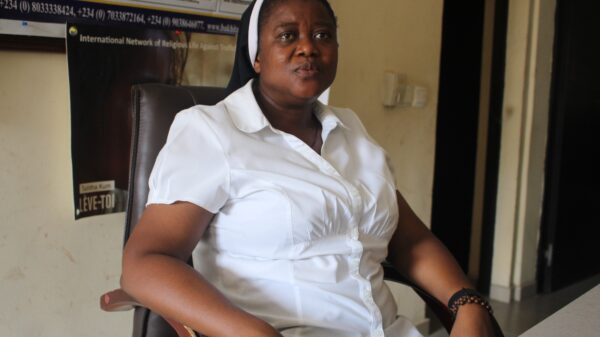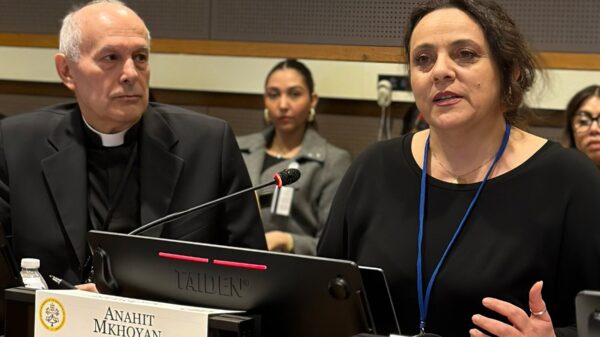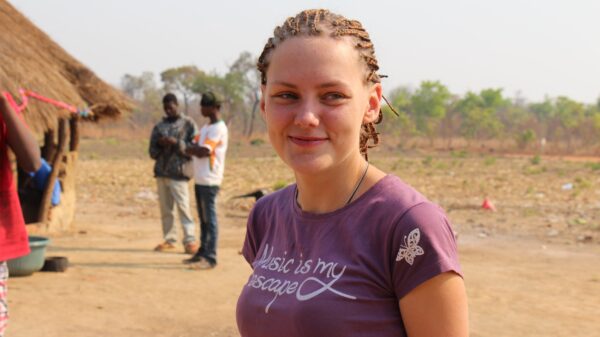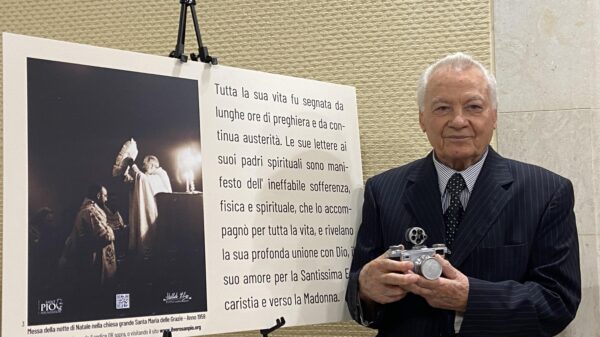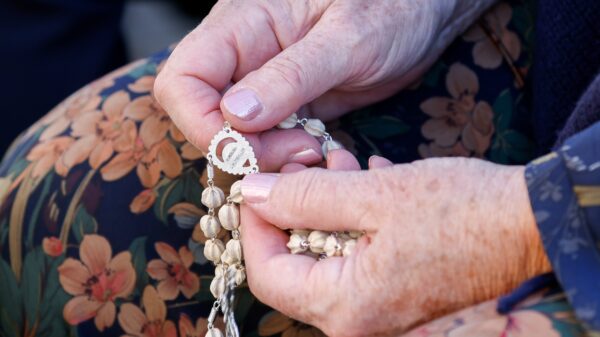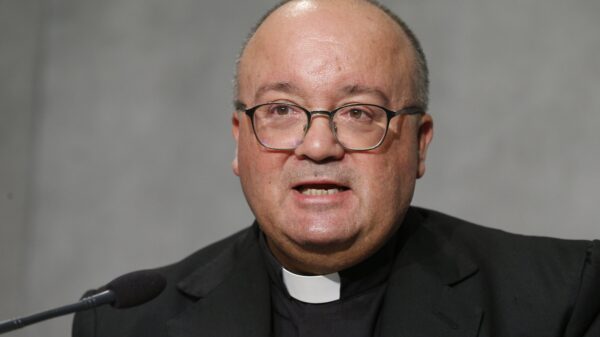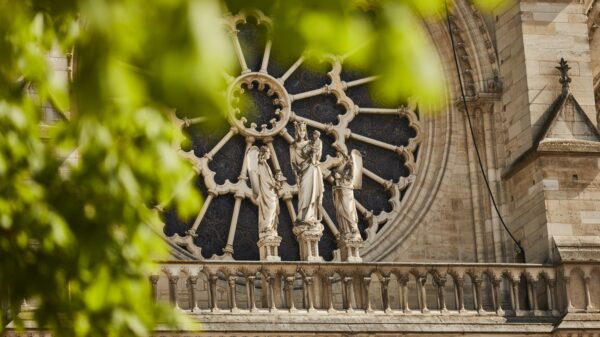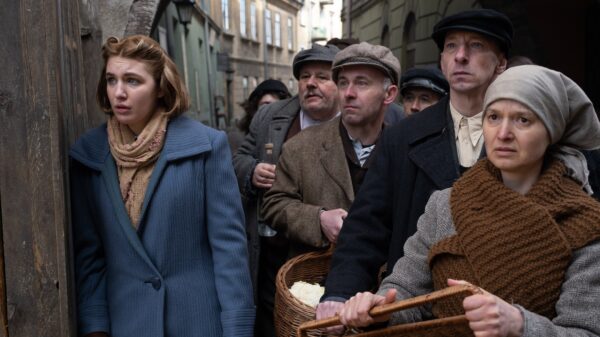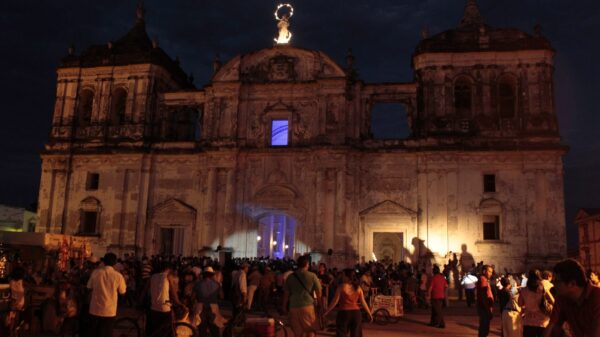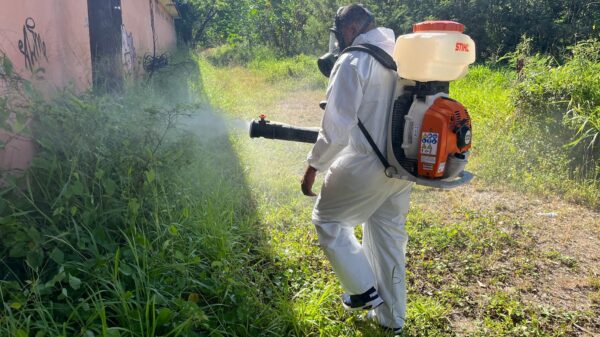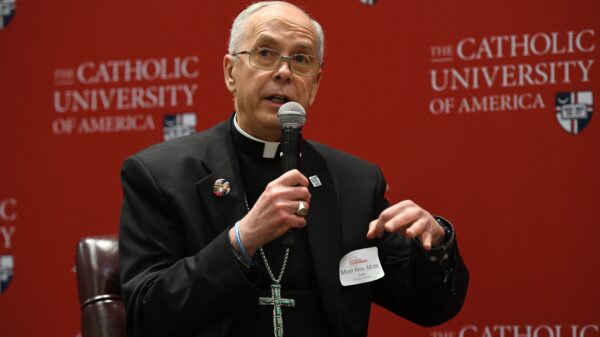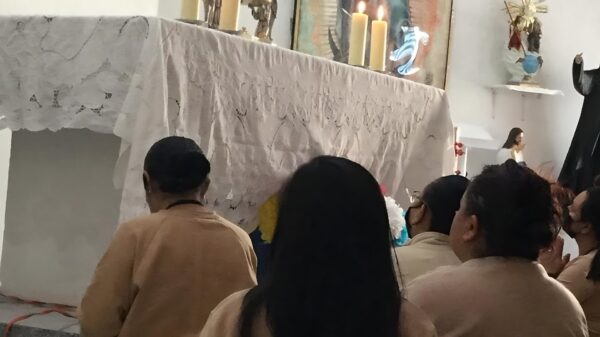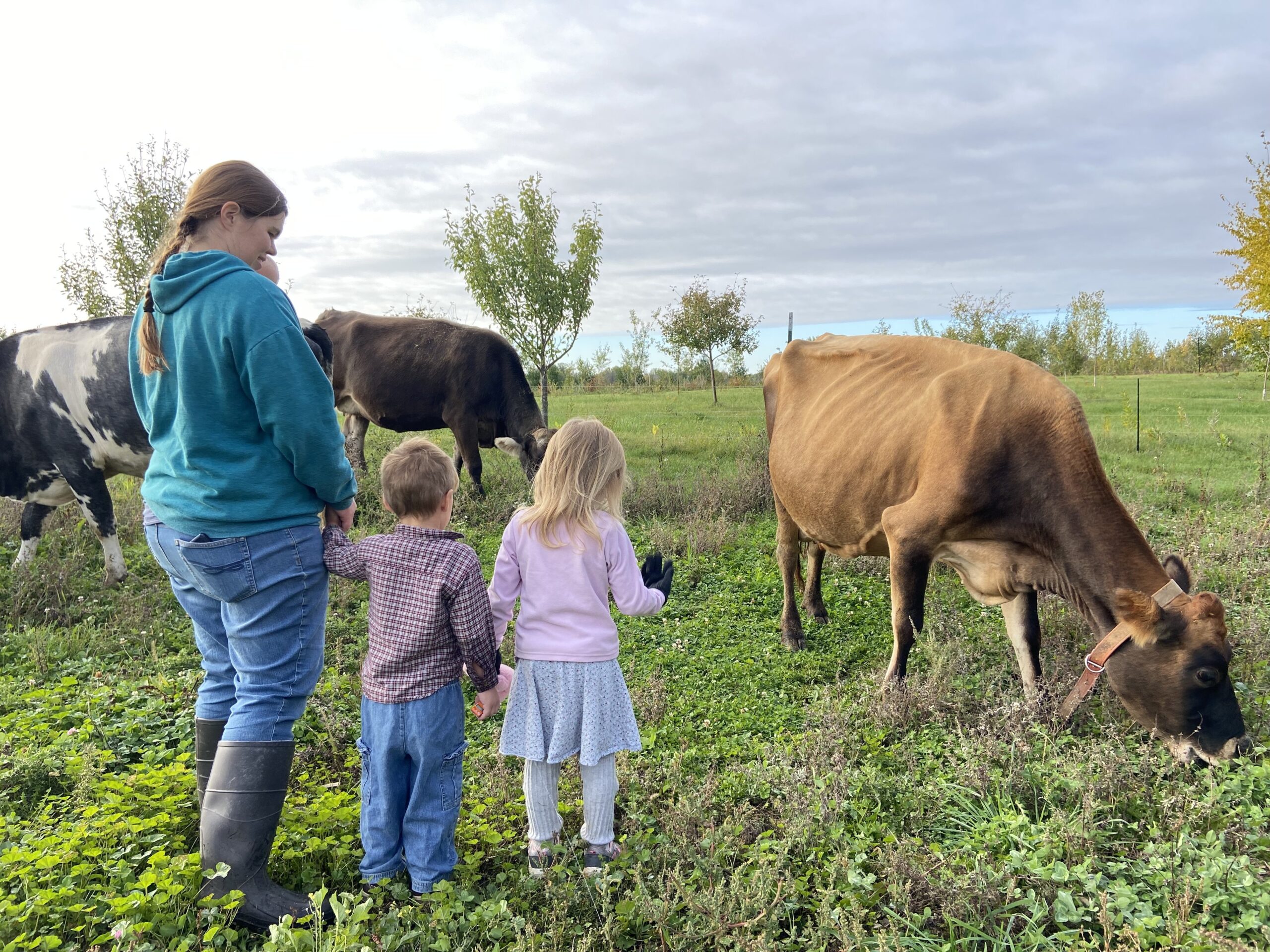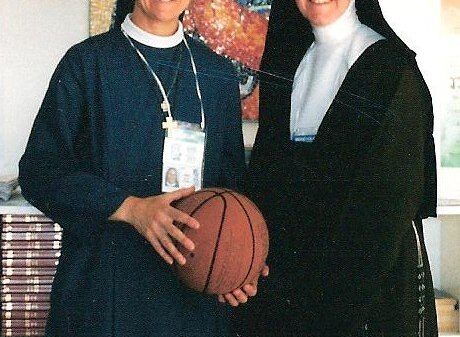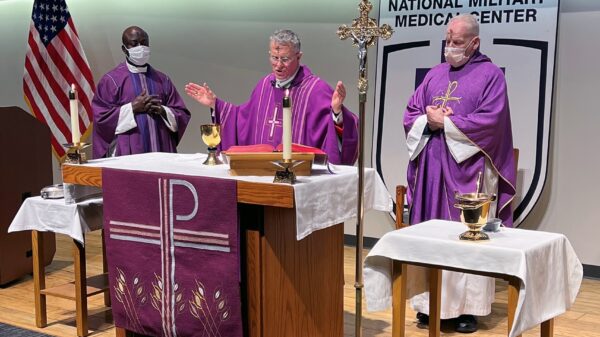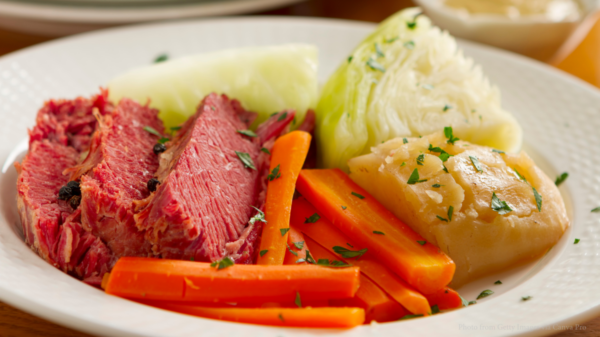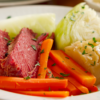By Anna Wilgenbusch
(OSV News) — On Tuesday, Oct. 11 at 6:30 a.m., frost hung on the grass field surrounding Johanna Jalbert’s home near Isanti, Minnesota. Her baby cooed and the sun leaked light over the rural horizon as she pulled on her farm boots. It was time to milk the cows.
“Here, heifers! Here, heifers!” she yelled to a herd of dairy cows that were quietly meandering over the property. Nellie, a deep brown heifer with a white tuft of hair on her huge head, sauntered towards the shed — her milk-filled udder swaying as she stepped up to the milking stand.
Jalbert plugged in a pulsating machine that helped her milk the cows. It made a loud, rhythmic sound that filled the space of the small shelter. Over the course of an hour, each of her eight dairy cows stepped up to the stand. After each cow’s udder was empty, she poured brilliant white milk into a refrigerated stainless steel tank. She measured the yield of the morning’s milking — 20 gallons of thick, creamy milk.
It was not the morning routine that Jalbert, 33, had expected she would have as a young mom. But she said she wouldn’t trade her life on the homestead for anything.
Many women like Jalbert have found themselves in a world of consumerism, processed foods and noise, and have decided to turn back to the land. In anticipation of the International Day for Rural Women Oct. 15, Catholic homesteading women in the United States reflected on their lifestyle and its connection to faith and family.
As Carol Marksteiner recently cooked a chuck roast from a local beef farm for dinner, she looked out of her home’s large window at the streaked sunset. In Sheboygan, Wisconsin, where she lives with her husband and their 1-and-a-half-year-old son, the air is still and quiet. There are no sounds of a city outside, there are no crowded streets or structures encased in concrete.
It was very different from the view from her kitchen window in 2021, when she lived in Fairfax, Virginia, a Washington suburb.
Marksteiner and her husband, Jon, felt cramped in a growing city with persistent COVID-19 restrictions. When they found a one-acre property in rural Wisconsin, they decided to take up the challenge of homesteading and sustainable living. Jon continued to work remotely while Carol settled into mothering and homesteading tasks.
Marksteiner said that her prayer life is enriched by the quiet of the country.
“You just think about the way the garden intended the Garden of Eden and the history of Catholics in agriculture,” she said. “Homesteading lends itself to thinking about those things, like, ‘What is my vocation? How can I do better to provide in my vocation, in where God is calling me? In this moment, in this day, in this house?'”
On their acre, the Marksteiners now have a flock of laying hens, meat chickens, a large garden, and a budding orchard of apple and cherry trees. They dream of adding even more animals and crops to their homestead to move toward greater self-sustainability.
About 650 miles southwest of the Marksteiner homestead, Kylie Glastetter harvested an abundant crop of butternut squash.
Glastetter encourages other women to take up homesteading, but she is not afraid to enumerate its challenges.
She documents her homestead and the dirt, manure and hard work that comes along with it on a social media platform she titled “Our Country Chaos.”
“I don’t think a lot of people realize the hard work that is put into this kind of lifestyle,” she said. Her days include homeschooling, gardening, caring for chickens and rabbits, canning and cooking.
“A lot of people want a slow and easy life, so they go to homesteading. But I don’t think it is a slow and easy life. It is more of an intentional life,” she said.
Despite the challenges and hard work of the homestead, Glastetter loves her small homestead in Chadwick, Missouri, because it allows her to be closer to her three children — ages 5, 3 and 1 — and delve deeper into her relationship with God.
“Homesteading brings the family life back to the way that I truly believe God intended for us to live,” Glastetter said. “I can’t help but feel God’s presence in the beautiful sunsets out here in the country or even something as simple as the wind blowing through a wheat field.”
On the evening of Oct. 11 in Osceola County, Florida, Brandie Walczak — founder of “Our Catholic Homestead” website, fiber art store and blog — was in the early stages of labor. She paced the house, cleaning as she went, as her contractions intensified. Soon, her midwife arrived and the water birth pool was filled to deliver her third baby.
She had planned to make chicken for dinner, but nausea and contractions made that impossible. Instead, she asked her husband to purchase hot dogs and boxed macaroni and cheese to feed the kids — foods that almost never appear in their homestead kitchen.
But “making it work” is one of the most important principles of homesteading, Walczak said. While she is enthusiastic about the benefits of homegrown food, she doesn’t have access to it all the time.
“It’s all about the season of life. Sometimes you do need to use the convenience foods and you shouldn’t feel guilty for that. But at the same time, I am trying to learn how to make my own pastas, learn how to make my own sauces, learn how to make my own breads,” Walczak said.
Walczak said that anyone can homestead, even if that means having an herb garden in the window box of an apartment.
Despite only having a fourth of an acre, Walczak grows vegetables and owns chickens that she houses on a relative’s property. She dreams of expanding her homestead to include a dairy cow.
“The way I define (homesteading) is using what God has given you,” she said. “It doesn’t require 100 acres, or 10 acres or even one acre. You can homestead where you are.”
Back on the Jalbert’s farm, the heifers grazed on long, verdant grass. They ate mouthfuls at a time, throwing the melting frost off of each blade as they went.
Johanna Jalbert, with her baby in her arms and three children at her feet, walked among their herd. She said that her children, more than anything, are her daily motivation to keep providing farm-fresh food for her family.
“It is a really great way to raise children and bring up a family,” she said. “I feel really blessed to be able to do what we are doing.”
Jalbert said the homesteading life lends itself to infusing work with prayer.
“Our work is meant to bring us closer to him (God). It is meant to be something sacred,” she said. “The kitchen table, for a mom, is her altar. That is where we praise God, worship God, in the things that we are doing, in our vocations.”
Anna Wilgenbusch writes for OSV News from St. Paul, Minnesota.









